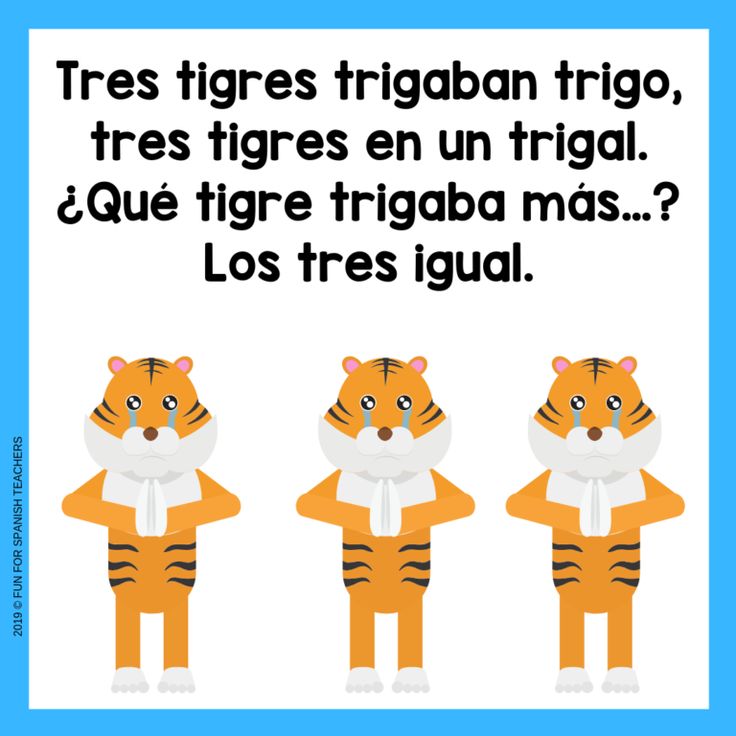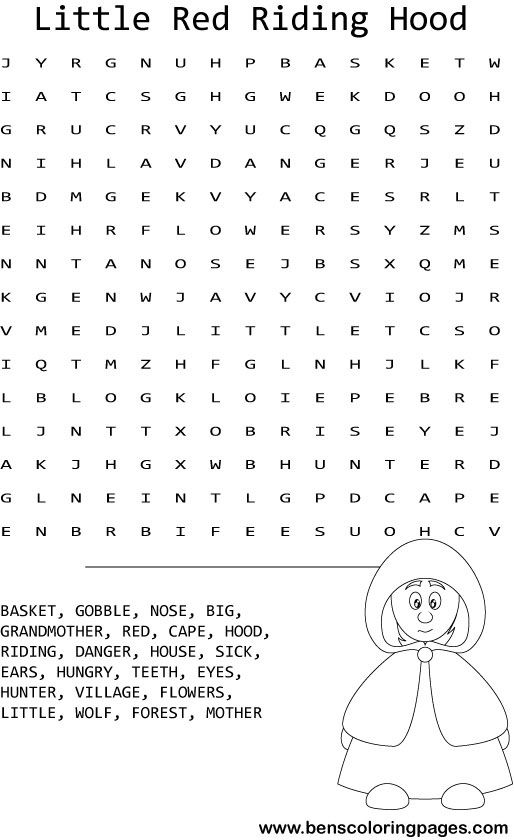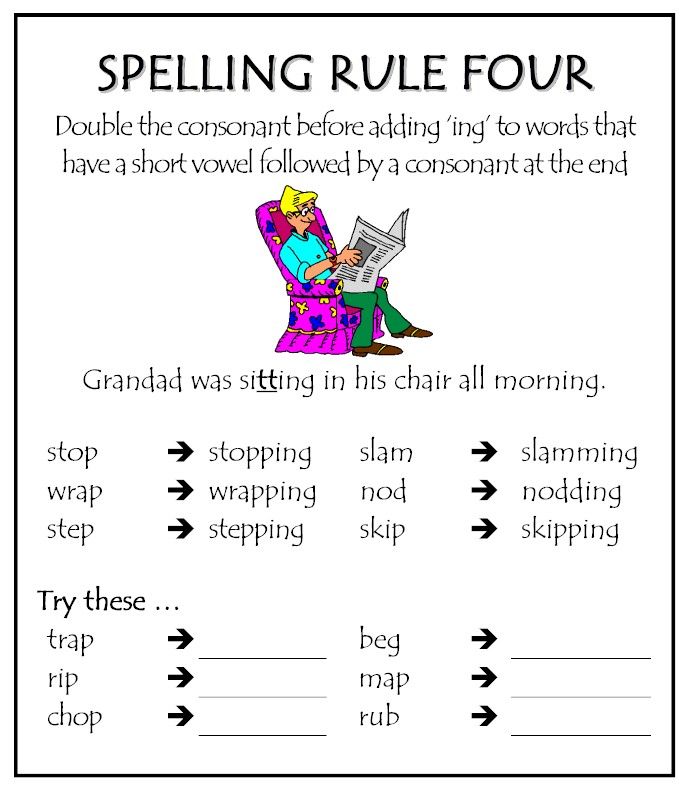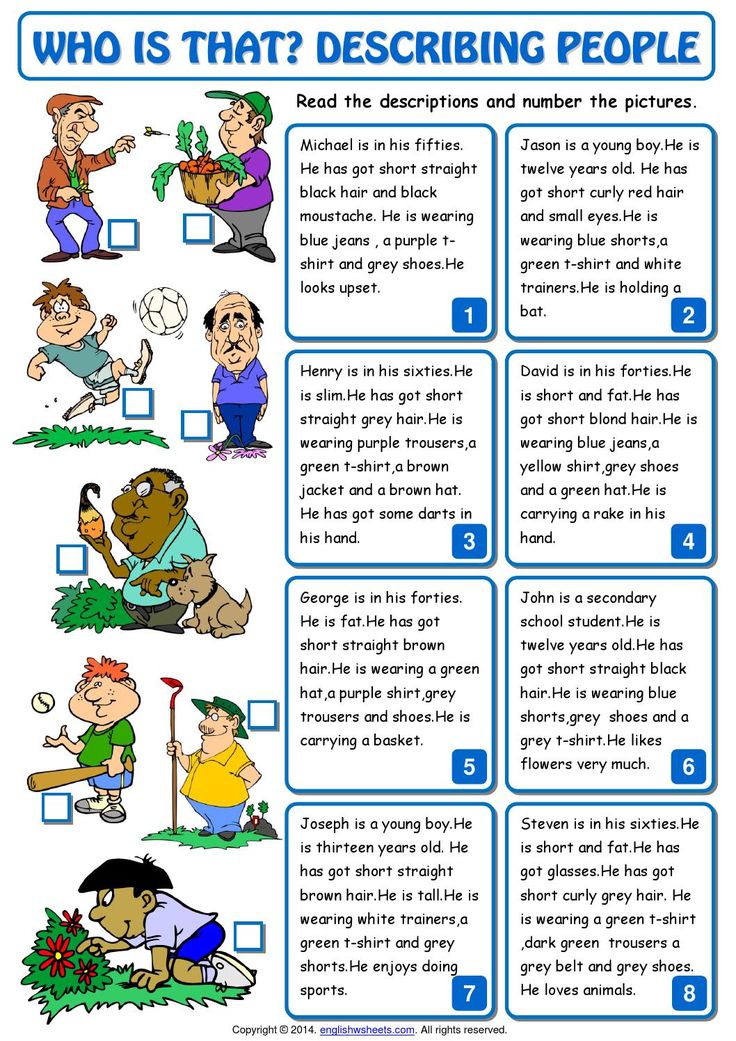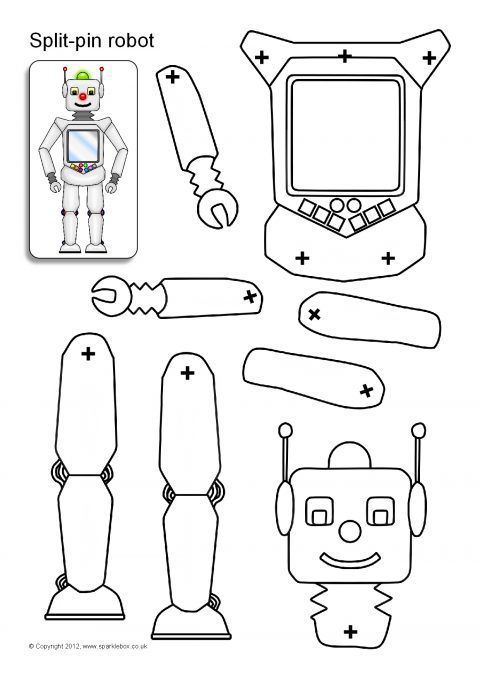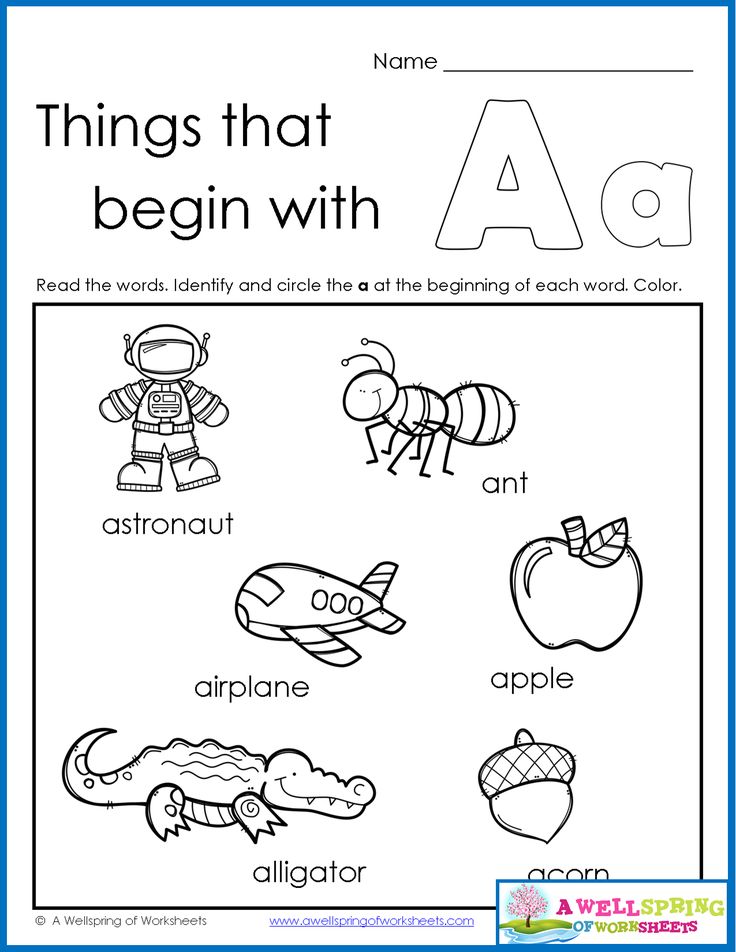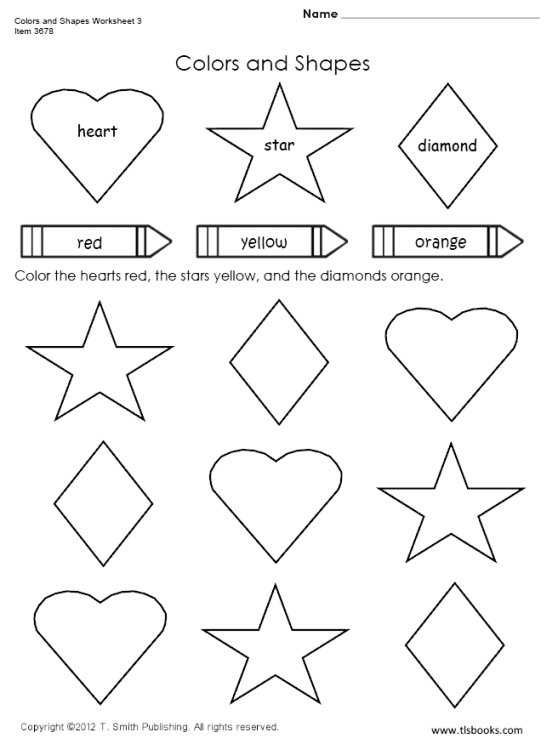Letter recognition activities for kindergarten
10 Simple Letter Recognition Activities for Kindergarten
One thing I distinctly remember from when I was a Kindergartener, was playing with the alphabet magnets on a magnetic easel. When I was in Kindergarten, most of what I learned throughout the year was letters and their sounds through lots of letter recognition activities. These days, most Kindergarteners come in knowing all their letters and the majority of their sounds. This doesn't mean we don't have to worry about letter recognition! It's important to continually teach the letters and their sounds to start building their fluency and prepare them for the first steps of learning how to read.
Teachers are usually split on how to teach letter recognition and sounds in Kindergarten. Some prefer to focus on one letter per week, teach the sound, as well as focus on other phonics skills. Many curriculums are laid out this way. Other teachers prefer the “boot camp” style- teaching one letter per day for the first 26 days of school.
It really depends on your school and class with how you teach letters. I prefer to do a week or two of just letter recognition, then three to four weeks of focusing on letter sounds, each day focusing on one to two sounds. There is no “right” or “wrong” way to teach letters and sounds, just as long as you spend time reviewing and practicing them. Today, I'm sharing 10 simple letter recognition activities for Kindergarten with you!
1. Pocket Chart Games
If you have a pocket chart and some alphabet flashcards, you're in luck! There are plenty of ways to practice naming letters with a pocket chart. You could play memory, where students have to match the uppercase to the lowercase letter. You can hide an object behind a flashcard and have students try to find it, by saying the letter name of each card. Another idea is to use letter cards to spell the names of our classmates.
2. Play Dough Letters
Fine motor skills are SO important to continue to develop in Kindergarten.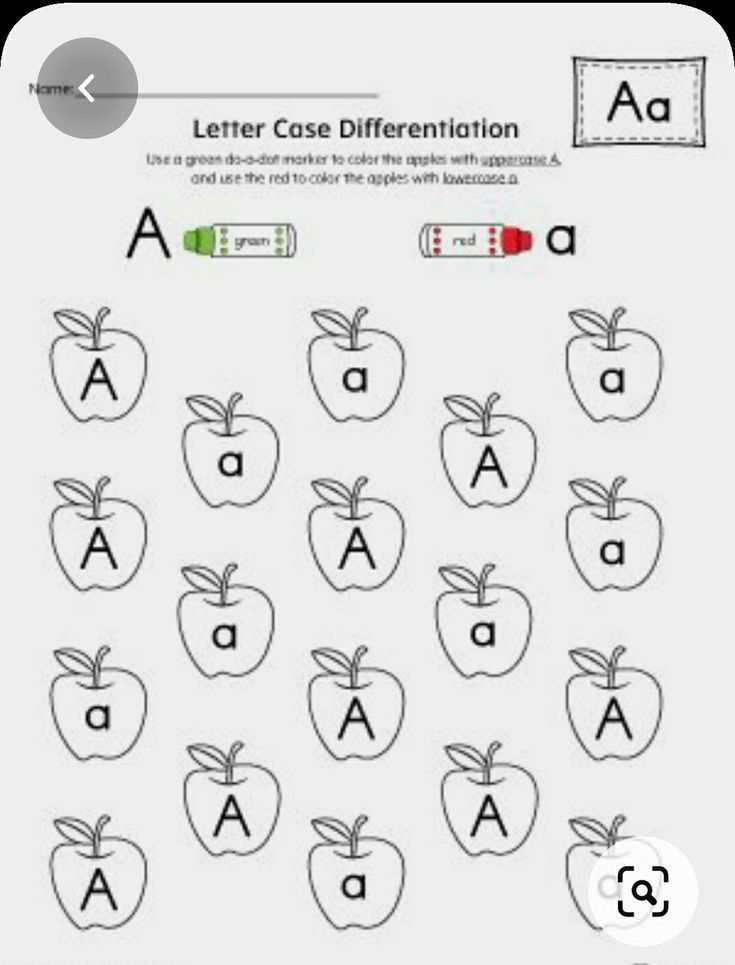 Playdough is undoubtedly my favorite way to add in a little fine motor practice plus it's fun! Have students roll out the play dough like a snake to make different letters. You can display the letter on the board, or use a playdough mat like this one found here: Phonics Play Dough Mats.
Playdough is undoubtedly my favorite way to add in a little fine motor practice plus it's fun! Have students roll out the play dough like a snake to make different letters. You can display the letter on the board, or use a playdough mat like this one found here: Phonics Play Dough Mats.
3. “I'm thinking of a letter…”
This guessing game is a fun way to practice the various attributes of a letter! Your students will try to guess what letter you are thinking of by giving them clues, and then letting them guess. For example, “I'm thinking of a letter that is a vowel. It looks the same both uppercase and lowercase. It does not have straight lines.” And you may have guessed I was thinking of the letter O!
4. Alphabet Sort
Using stamps, letter magnets, or even a pencil, have students sort letters by their different attributes, by vowels and consonants, or if it's in the students' name. You can grab this freebie here: Free Alphabet Sorting Mats.
5. Play a song
Did you know that songs help kids learn? Hearing that rhythm and rhyme helps skills stick in their brains longer.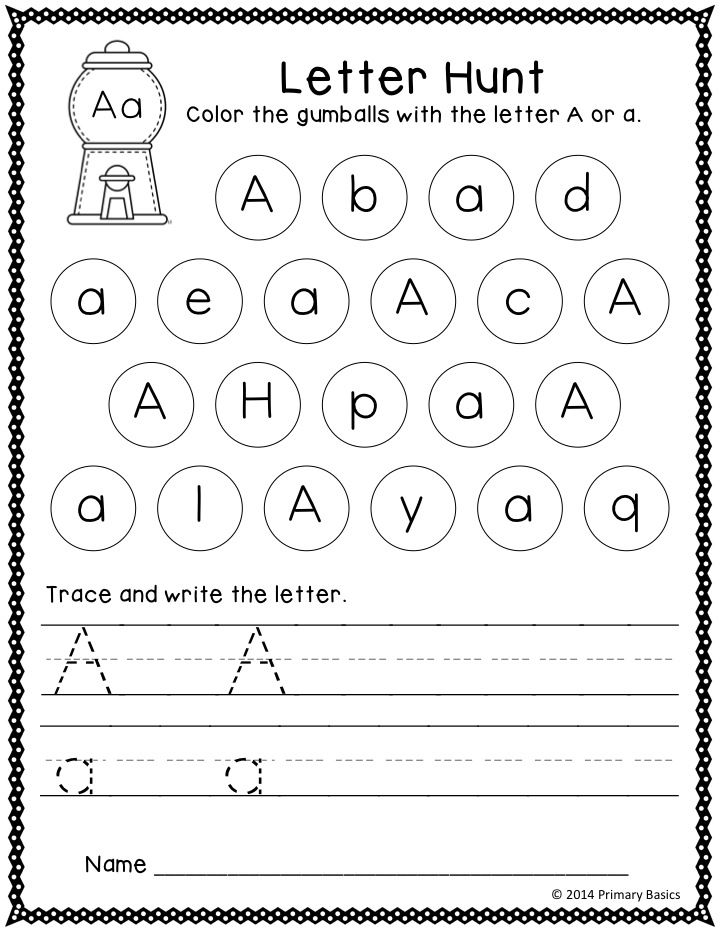 Think about how you get those songs stuck in your head, even from 10 years ago! You can find a whole playlist of songs to practice letters here.
Think about how you get those songs stuck in your head, even from 10 years ago! You can find a whole playlist of songs to practice letters here.
6. Letter Crafts
This makes an adorable book that students can take home once they are finished! We did these letter crafts as part of our Fun Friday centers every week. At the beginning of the year, I did a lot of modeling and we did the first few together. After a few letters, they were able to do it just by looking at the picture sample.
7. Read a book
Reading is one of the best ways to add in some variety to your phonics lessons! Grab an alphabet book and have students go on a letter book hunt while you read. Pause when you come to a letter and have the students shout it out.
Check out my post on books that teach letter recognition and sounds here.
8. Letter Hunt
Use what's already in your classroom to go on a letter hunt! Have students pick a letter card out of a basket and go “hunt” for that letter. They can find it on a poster, book cover, friend's name, anywhere! Once they find one, they stop where they're at until all friends have found a letter.
They can find it on a poster, book cover, friend's name, anywhere! Once they find one, they stop where they're at until all friends have found a letter.
9. Write and Wipe
Give each of your students a whiteboard and dry erase marker. Call out a letter and have students write it on their board and hold it up to show you. You can quickly check and see how your students know each specific letter.
10. Shaving cream letters
Squirt a little bit of shaving cream on each student's desk and have them practice writing letters! You can call the letter out to write or write it on the board and have them copy it. Bonus: this makes your classroom smell amazing and cleans the desks!
More Letter Recognition Activities for Kindergarten
If you're looking for a simple, all in one guide to teaching Letter Recognition and Sounds, check out the Kindergarten Phonics Curriculum Unit 1: Letter Recognition and Sounds. This includes a six-week unit overview, phonemic awareness warm-ups, detailed lesson plans, center activities like the play dough mat above, worksheets, and more!
What letter recognition activities for Kindergarten would you add to this list?
11 Easy Letter Recognition Centers for Kindergarten
Centers
As a kindergarten teacher, you eat, breathe, and sleep letters. Learning to recognize letters is one of the most pivotal skills students learn in kindergarten. To help you freshen up your literacy centers, read on for 11 easy letter recognition activities for kindergarten.
Learning to recognize letters is one of the most pivotal skills students learn in kindergarten. To help you freshen up your literacy centers, read on for 11 easy letter recognition activities for kindergarten.
This article, along with many other articles on The Printable Princess website, contains Amazon affiliate links. If you purchase through the links I earn a small commission. We only share links to things that we love.
Letter Recognition Activities for Kindergarten
Learning to recognize letters is the most basic literacy skill in which all other literacy and reading skills are built. Put simply, it’s super important for students!
It’s important to work letter recognition activities into your daily routine. However, doing the same activities and letter recognition centers over and over will lead to boredom for your students faster than you can say “school’s out!”
Beat the boredom and master those letters with these 11 letter recognition activities for kindergarten.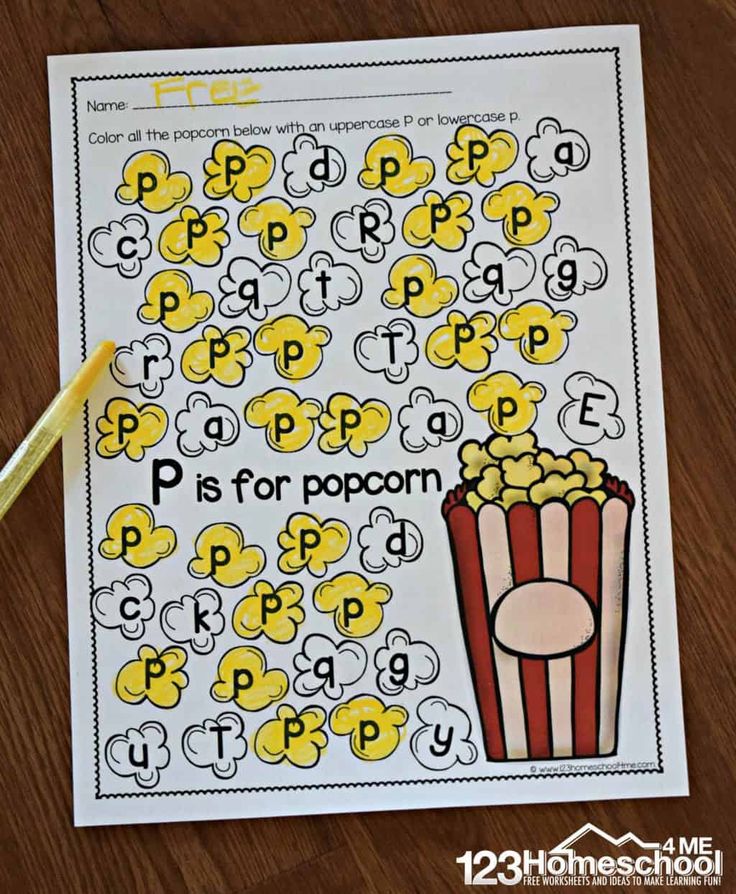
#1. Alphabet Tic-Tac-Toe
For this center activity, pair students up into partners. Give each pair a basic tic-tac-toe board or draw one on a whiteboard.
You can prep mini tic-tac-toe boards by folding a piece of card stock into fourths and creating a board on each fourth. Laminate and cut them apart to use time and again.
Each partner will be assigned a letter to mark their spaces. Each time they lay their magnetic letter or write it with dry-erase marker, they must say the letter name. Play continues until the first student gets 3 in a row to win.
You can also have students use the same letter, with one student being uppercase and the other student being lowercase.
#2. Letter Match
This letter recognition activity for kindergarten is a great letter recognition and team building center. To play, mix up uppercase and lowercase letter tiles or letter cards and place them in a pile.
Have students work together in a small group to match the uppercase and lowercase letters together.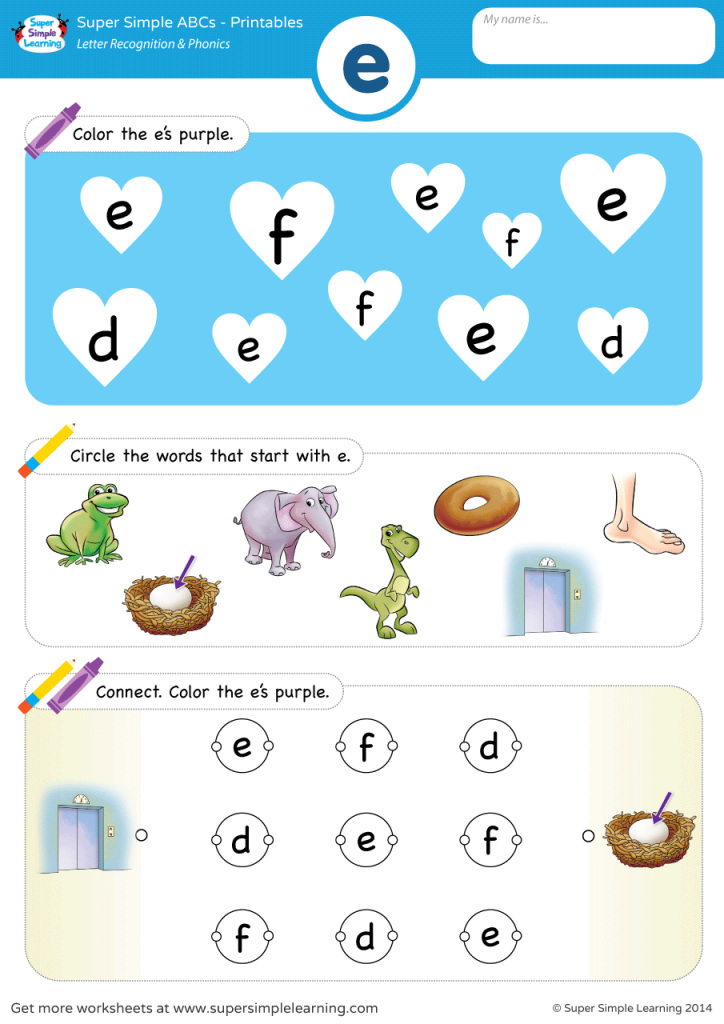 To take it a step further, challenge students to place the uppercase and lowercase letter matches in order from A-Z.
To take it a step further, challenge students to place the uppercase and lowercase letter matches in order from A-Z.
#3. Hidden Letters
Hide magnetic letters in a tub of sensory materials such as cereal, rice, noodles, etc. Give students a pair of jumbo tweezers and have them take turns grabbing a hidden letter with the tweezers, identifying the letter, and saying the letter name aloud.
This letter recognition center is perfect for incorporating fine motor skills and sensory learning into the day.
#4. Heads Up
For this center, students will play with a partner. Each pair will need a whiteboard and dry-erase marker. The first student will write a letter on the whiteboard without showing their partner.
They’ll pass the whiteboard to their partner, without the partner looking at the letter. The partner will hold the whiteboard up to their forehead, facing their partner.
The student that wrote the letter will give hints about the letter to their partner until the partner guesses the letter.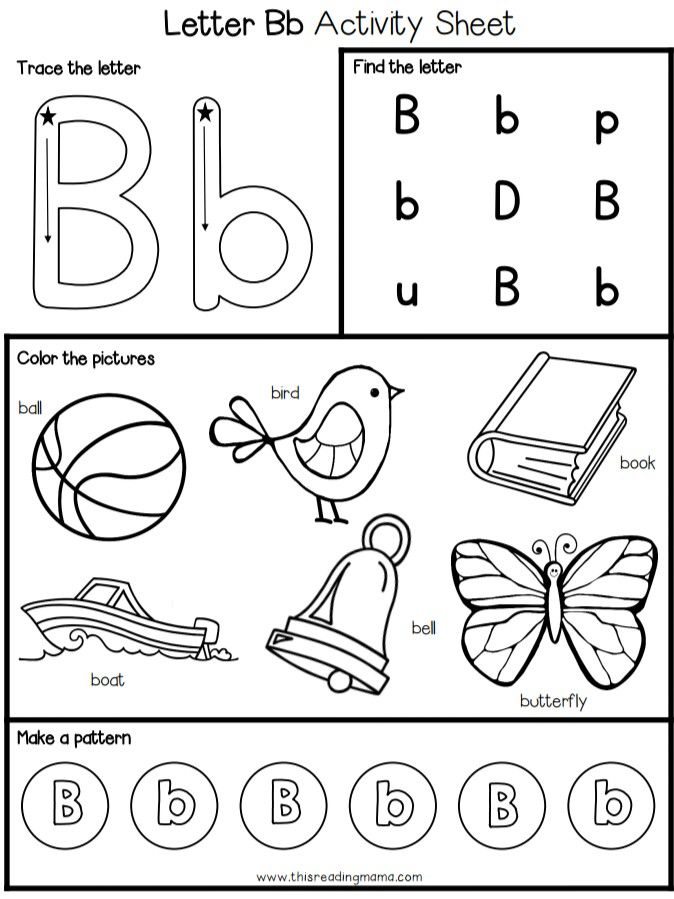 Hints can be about the shape of the letter, whether it’s a vowel or consonant, if someone’s name begins with it, or a beginning sound word clue.
Hints can be about the shape of the letter, whether it’s a vowel or consonant, if someone’s name begins with it, or a beginning sound word clue.
After the student has made 5 guesses or guessed correctly, the letter will be revealed and then the next student will choose the letter and give hints to play another round.
#5. Letter Toss
For this letter recognition activity for kindergarten, use a dry-erase cube to write letters on all sides. Students will take turns rolling the cube, saying the letter, and writing it on a whiteboard in both uppercase a lowercase. Play continues to the next student.
To focus on only one letter at a time, you can write the same letter in uppercase and lowercase on the cube and have students identify the letter and whether it is uppercase or lowercase before they write it.
You can also use color-coded letter cards and corresponding recording sheets like the ones found in this roll and color activity.
#6. Find the Letter
This easy letter recognition center will be a blast for your students and help them think on their feet.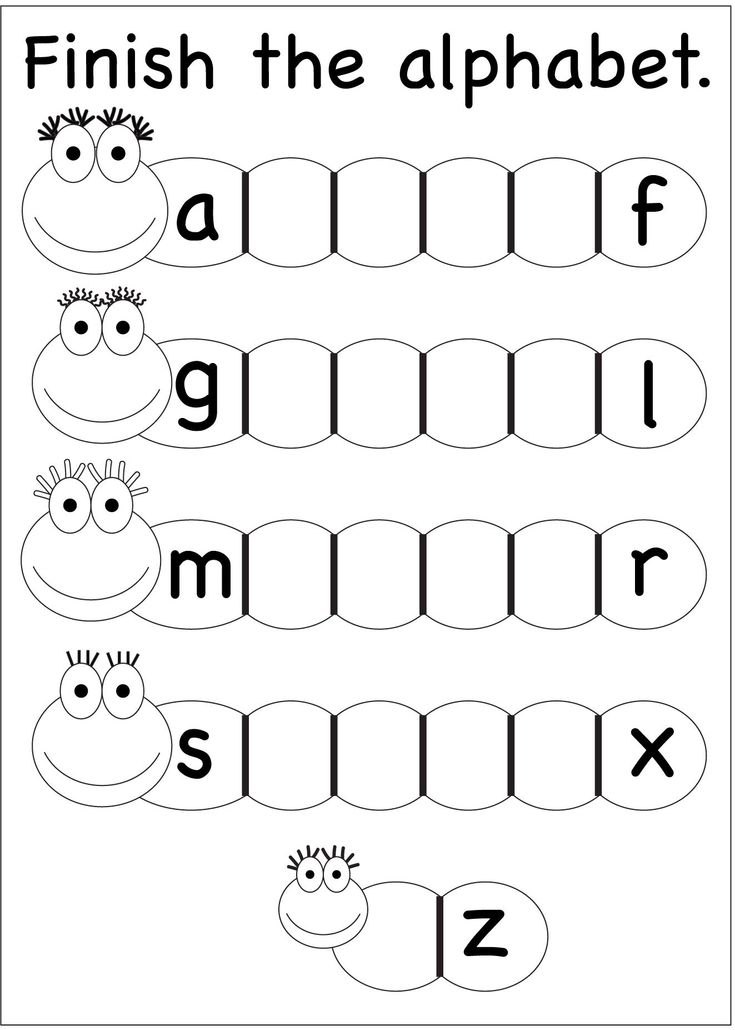 To play, spread magnetic letters or letter cards out on a table or on the floor.
To play, spread magnetic letters or letter cards out on a table or on the floor.
Call out a letter and have students race to find it in the pile. The first student to find it gets to keep the letter. The student with the most letters at the end wins. You can also have students take turns finding the letters instead of racing to find them.
This would make a great small group game. Follow it up with an independent practice activity where students work on finding letters and reading left to right with individual find the letter activity pages.
#7. Magazine Hunt
Choose a few letters that you want your students to work on. Divide a large piece of chart paper into that number of sections and label the top of each section with a letter, written in both uppercase and lowercase.
Give one piece of chart paper to each small group of 4-5 students. Supply students with magazines, scissors, and glue. To practice, students will look through the magazines, cut out letters that match one of the sections on the chart paper, and glue them in the appropriate section.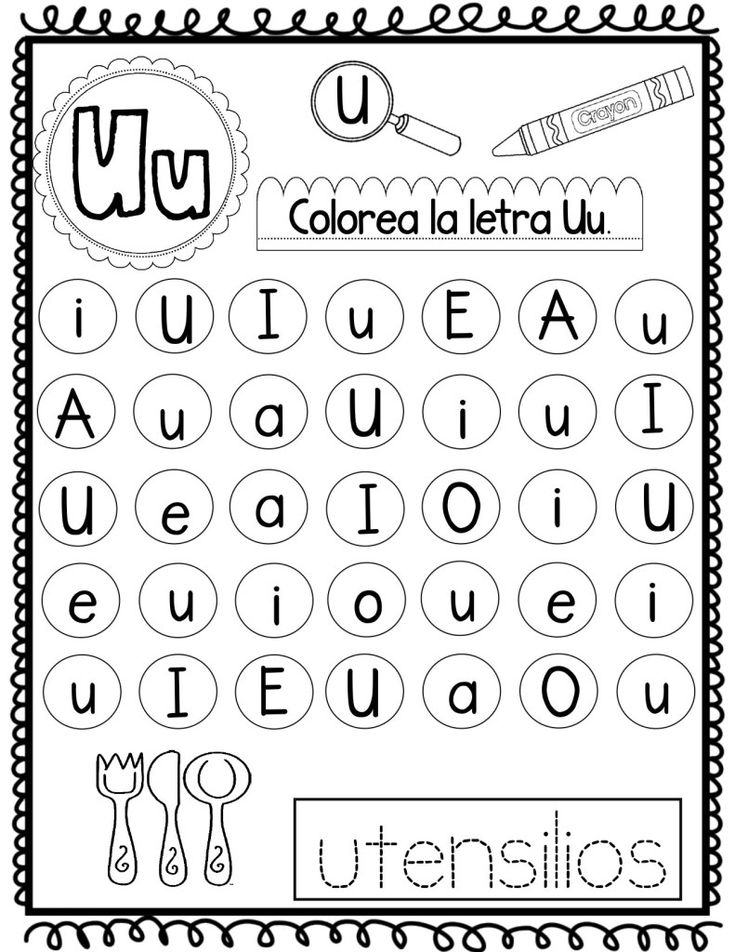
To save yourself prep time, you can make one chart paper and have all students rotate to this letter recognition center to work together to fill it up. Next time you use the center, you can use a new chart paper with new letters.
#8. Sticker Letters
Write an uppercase and lowercase letter pair in large letters on a piece of white paper. Make copies for each student. Students will practice forming the letters by using small stickers to place on top of the letters.
This is great for fine motor practice as they practice peeling off each sticker and sticking it to the letter. If they finish early they can rainbow write the letter on the back of the page or draw pictures that start with that letter, working on beginning letter sounds.
#9. Clip and Match
To prepare this activity, write different sets of uppercase and lowercase letters on sentence strips. Write the letter 3 times on each strip. For example, one strip may have B, B, B and another may have b, b, b.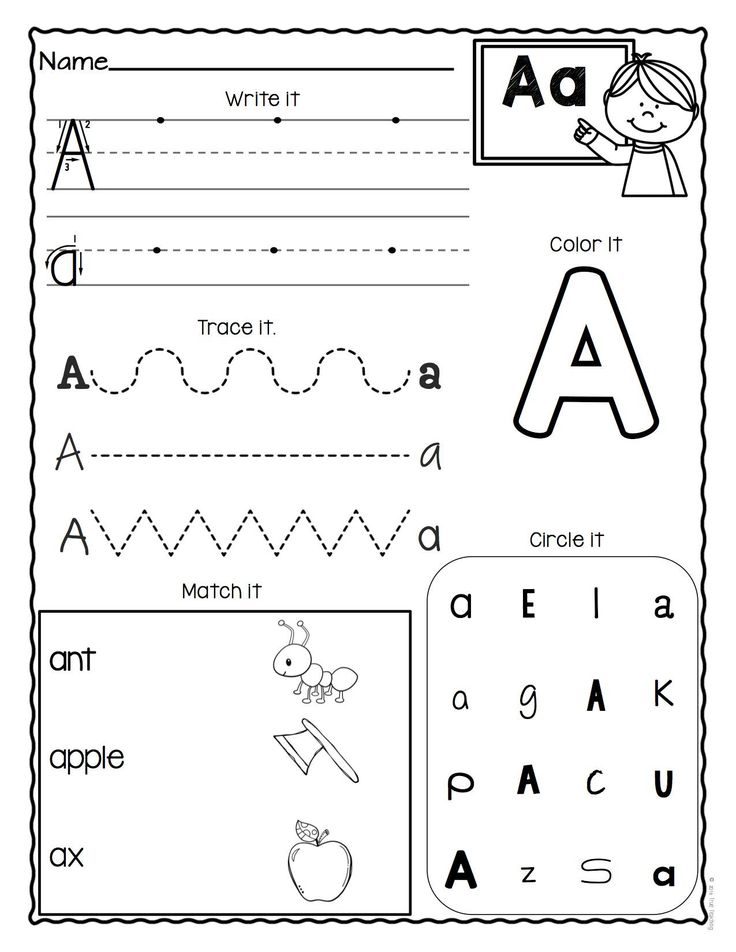
Mix up the sentence strips and provide students with clothespins. Students will work to find an uppercase and lowercase sentence strip that match and clothespin them together.
For extra fine motor practice, they can clip over top of each letter, using 3 clothespins per match and saying the letter each time they clip.
#10. Spoon Match Up
This easy, DIY letter recognition center requires nothing more than a set of white plastic spoons, a set of clear plastic spoons, and a permanent marker.
To prep, write one letter on the top of a white plastic spoon and the corresponding uppercase/lowercase letter on the bottom of a clear plastic spoon with a permanent marker.
Continue until all letters have been written on both sets of spoons. You can prep letters A-Z and use them all or sort them into smaller groups of letters to focus on fewer letters at a time.
Mix up the spoons and have students find the matching white and clear spoons and put them together so they can see both letters and make a match.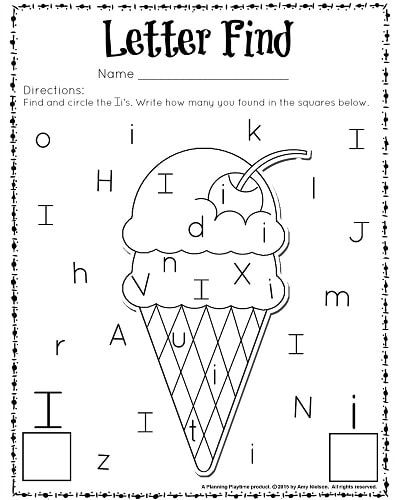
#11. Click and Listen Boom Cards
This letter recognition center for kindergarten would be perfect for an independent center or technology center. These Click and Listen Letter Identification Boom Cards provide students with an interactive way to practice hearing the letter sound and choosing the corresponding letter.
There are 2 decks for letter identification and 2 decks for letter sound identification included, giving students ample opportunities to practice. These are self-checking, have audio directions and letter names or sounds depending on the deck, and require no prep.
I hope these 11 letter recognition center ideas have given you some inspiration to try something new with your students to practice learning letters.
If you would love even more letter recognition activities for kindergarten, check out my Endless Letters and Letter Sounds Bundle. This bundle is always growing and getting new activities added to it, so you’ll never run out of fun ways to practice!
Post Tags: #alphabet#centers#DIY centers#letter recognition#literacy centers
Similar Posts
Guidelines for parents of the preparatory group on the topic: "How to introduce children to letters.
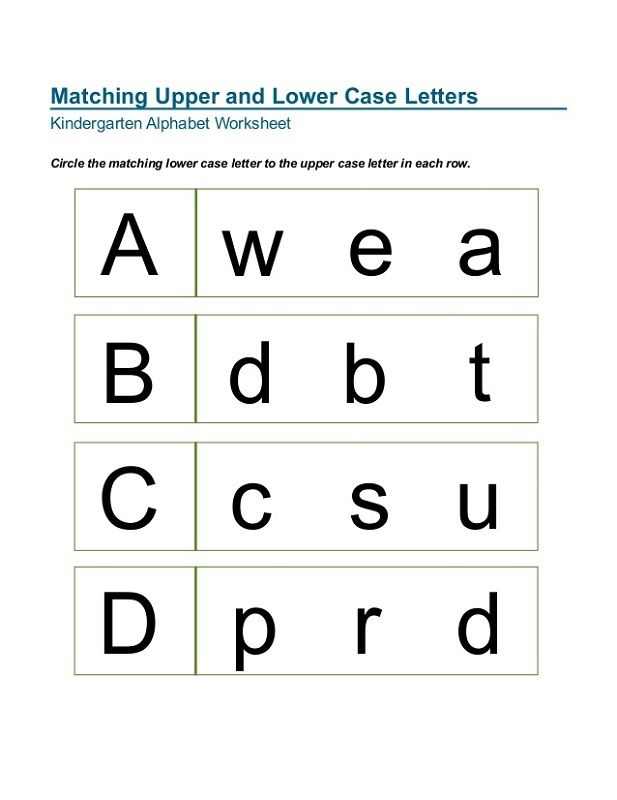 " | Article on teaching literacy (preparatory group):
" | Article on teaching literacy (preparatory group): Guidelines for parents of the preparatory group
on the topic:
"How to introduce children to letters."
The main task of counseling is to help the child learn letters.
The characteristic and image of the letter correspond to the icon itself, and not to the words that begin with this letter. For a small child, it is not enough to say “A is a bus.” A child of middle preschool age has not yet formed the associations that adults have. The world of children is a special world, with its own ideas, therefore it is necessary to acquaint a child with letters using the concepts available to him. From ordinary words and familiar images, one must smoothly move on to the study of letters. When working with a child, imagine each letter as a new friend.
Cut out colorful letters from cut alphabet and stick them on thick cardboard. You can purchase a magnetic alphabet and attach the letters to a metal surface, such as a refrigerator. Very good letters made of pressed cardboard, collected in cells in the alphabet. You can take them out of your "house", touch, play. There is a soft construction set with letters that you can get wet and play in the bath. The letters must become real. The main occupation of a preschool child is play. Learning letters, children play with them. The letters "come to life" and become as beloved as bears and dolls. This means that they must have names or names, like all surrounding objects. The letter "Zh" is very similar to a beetle, it also knows how to buzz. The letter "T" can be picked up and knocked like a hammer, because the letter "T" looks like a hammer. The letter "U" has the same horns as a snail.
Very good letters made of pressed cardboard, collected in cells in the alphabet. You can take them out of your "house", touch, play. There is a soft construction set with letters that you can get wet and play in the bath. The letters must become real. The main occupation of a preschool child is play. Learning letters, children play with them. The letters "come to life" and become as beloved as bears and dolls. This means that they must have names or names, like all surrounding objects. The letter "Zh" is very similar to a beetle, it also knows how to buzz. The letter "T" can be picked up and knocked like a hammer, because the letter "T" looks like a hammer. The letter "U" has the same horns as a snail.
Show your child new letters every day. Read the sound, not the name of the letter: "Look, this is the letter "M" (not "eM"), this is the letter "H" (not "en"). Draw the child's attention to the elements of the letter, for example: "P" consists of a stick and an arc. Ask to run your finger over the elements of the letter.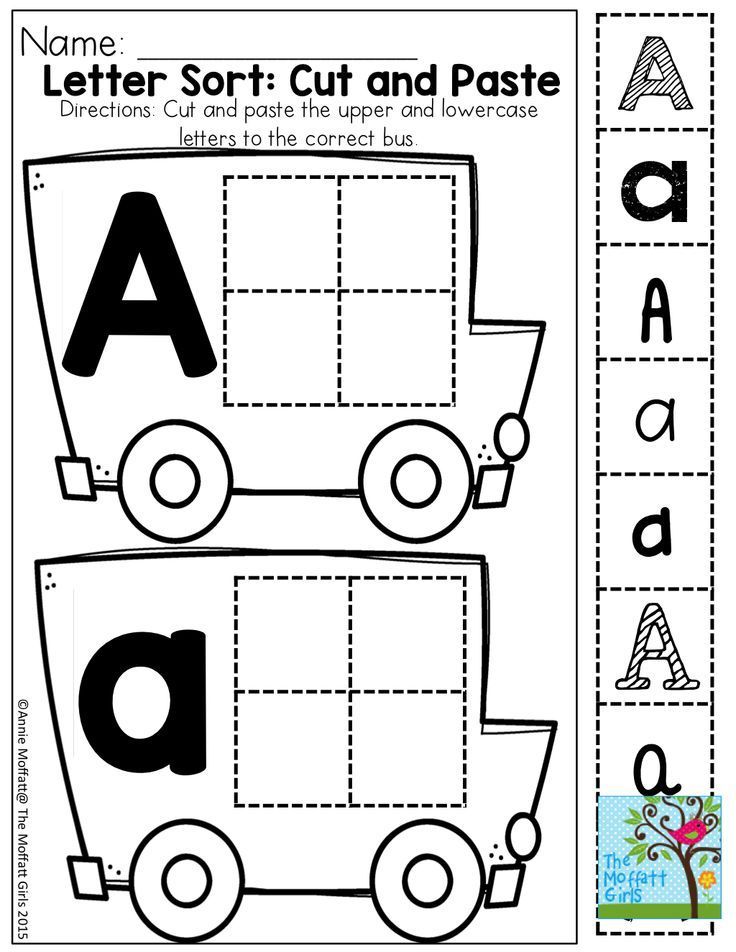 After tracing the letter, ask the child what it looks like. (V - glasses, G - poker, D - house, O - hoop, P - gate to the park, etc.) With this approach, children will never confuse even outwardly similar letters, because each has its own inimitable appearance. The child remembers exactly the image of the letter and quickly associates this semantic image with the sign.
After tracing the letter, ask the child what it looks like. (V - glasses, G - poker, D - house, O - hoop, P - gate to the park, etc.) With this approach, children will never confuse even outwardly similar letters, because each has its own inimitable appearance. The child remembers exactly the image of the letter and quickly associates this semantic image with the sign.
The first rules for successful learning to read:
- Play! The game is the natural state of the preschooler, the most active form of knowledge of the world, the most effective form of learning. The education of a preschooler should take place, as it were, by the way, in a game situation, in an atmosphere of exciting work.
- Maintain interest in activities, use a variety of games and aids.
- What matters is not the duration of the lessons, but their frequency. Be consistent in learning to read.
- Your directions and instructions should be short but to the point - a preschool child is not capable of taking long instructions.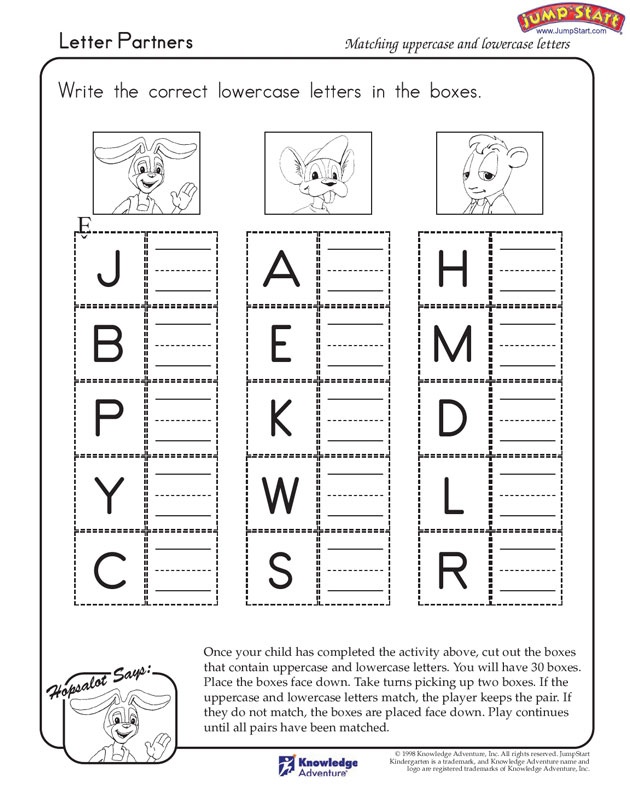
- Start learning to read only if the child's oral language is sufficiently developed. If the child's speech is replete with errors in word coordination, in the syllabic structure of words, or defects in sound pronunciation, you should first contact a speech therapist.
- Mastering reading requires great mental and physical effort from the child. Therefore, at each lesson, be sure to combine training exercises with warm-ups (physical minutes, finger gymnastics, outdoor games, and everything that your fantasy tells you).
- The child's unwillingness to study is a sign that the adult has exceeded the child's capabilities. Stop and think what went wrong?
- A child is not a reduced copy of an adult. The child has the right not to know and not to be able! Be patient!
- Do not compare your child's progress with other children's. The pace of learning to read is individual for each child.
- Each child has his own optimal way of learning to read. Try to find exactly those techniques and methods of work that correspond to his individual characteristics.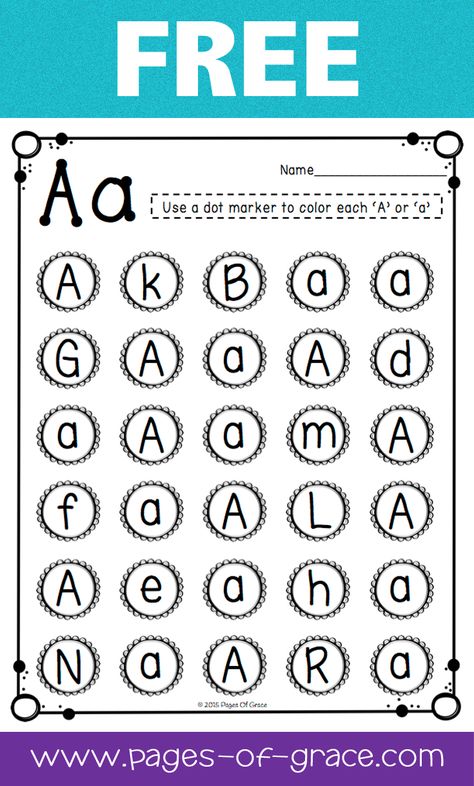
- Never start classes if you or your child are in a bad mood: such activities will not bring success!
Training to keep the order of the letters:
The child is asked to lay out the pattern from the mosaic according to the sample, but not by elements, as usual, but starting from the upper left corner, move from left to right, line by line from top to bottom.
2. The child "reads" sequences of colored dots. The cards are presented with 4 lines of multi-colored dots, 14 in each, the child must sequentially list the colors found on the card from left to right and from top to bottom.
What needs to be done before a child starts learning to read? Develop the necessary skills. Which?
- Recognition of shapes, recognition of slightly different details. Games that encourage the child to carefully examine the picture, compare the shape of the details will help; mosaics of varying degrees of complexity, jigsaw puzzles, pictures in which you need to look for hidden shapes, in general, any games that develop observation skills.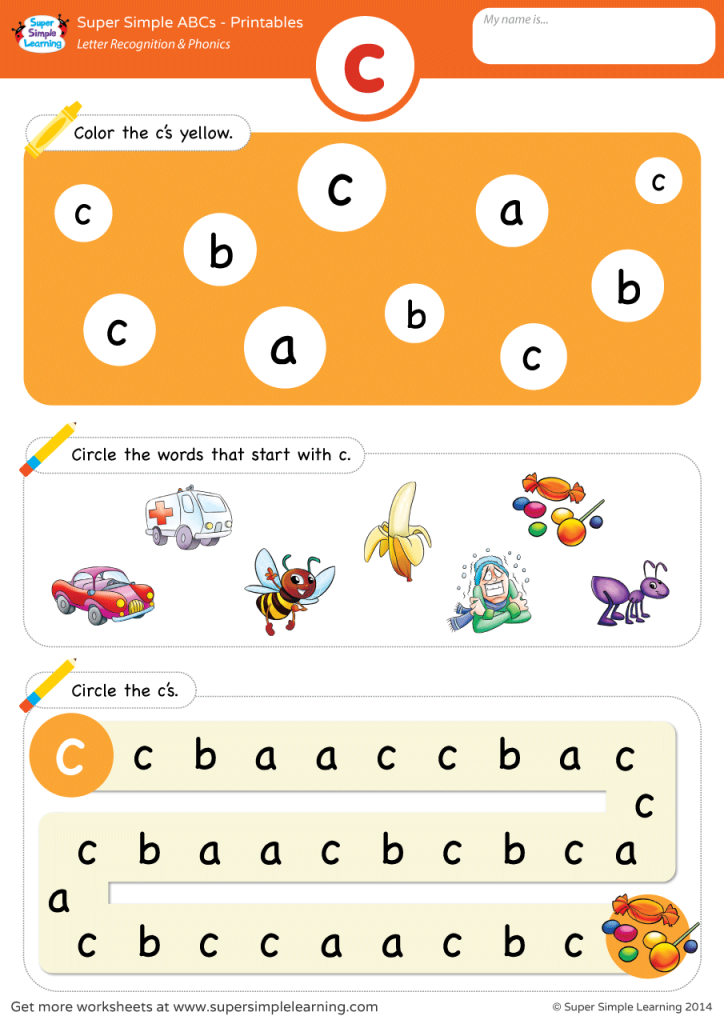
- Ability to arrange elements in sequence. Games and exercises in which you need to arrange the elements in order, but from left to right, will help. For example, you can give your baby sets of objects that are the same shape but slightly different in size, and ask him to arrange them in order from left to right.
- Development of the perception of sounds by ear.
A five-six-year-old child is able to distinguish sounds by ear, can name a word that begins with a certain sound, find the place of a sound in a simple word (what order?). All these actions are called the sound analysis of the word. If a child knows how to distinguish sounds in words, determine their sequence, then he is ready to master reading and writing. But such readiness may not arise in the baby on its own.
Teach a four-year-old child to highlight sounds in a word by emphasizing a certain sound. This is the initial stage of preparation for learning the sound analysis of words. Consonant sounds can be distinguished by pronouncing them lingeringly, for a long time (ZhZhZhuk, SHSHShapka, eZhZhZh, koshshshka). Vowels are distinguished by a drawn out pronunciation (dOm, cat). Ask your child questions: "What sound does the word UUUzh begin with?", "What sound is heard after the sound" y "?" Use cubes, pictures, games as visual material. The lesson should not last more than 5-7 minutes.
Vowels are distinguished by a drawn out pronunciation (dOm, cat). Ask your child questions: "What sound does the word UUUzh begin with?", "What sound is heard after the sound" y "?" Use cubes, pictures, games as visual material. The lesson should not last more than 5-7 minutes.
Pay more attention to sound analysis from the age of 5. You can move on to the analysis of words from 3 sounds (house, cheese, cat, forest, ball, whale, cancer), and then from 4 and 5 (fox, beads, moon; house, mushrooms, boots). Classes should also be carried out in a playful way.
The following exercises can serve as a basis for practice.
- Definition of the first and last sound (not letters!) in a word. Notice the sounds! So, naming the sounds in the word "oak", the child calls the last "p". Don't correct him. Your task is to work out the distinction of sounds in a word.
- Naming all sounds (not letters!) in a word in order.
- Name all words that begin with a certain sound, such as the sound "s".
- Building a sound chain: Elephant - LegA - Car - Luk - Cat, etc.
- Search for rhymes to given words. You ask a word - the child selects the appropriate sound (a bump is a bear, a night is a bump, a ball is steam, an ax is a fence).
Some experts recommend introducing the child to the concepts of vowels and consonants, hard and soft consonants, deaf and voiced sounds ... And also to teach the child to represent the sound composition of a word in the form of a model, when each sound is indicated by a chip of a certain color. Of course, it is not a problem to find recommendations for such classes, there is enough literature now. And yet this work requires from parents not only patience and desire, but also special training. Therefore, if you do not have this knowledge, limit yourself to games with sounds and words. This is quite enough if the child's speech development is normal. The rest of the work on teaching the child sound-letter analysis will be done by the teacher at school. If you foresee any difficulties in the baby in advance, it is better to seek help from a speech therapist.
It happens that parents at home or teachers in kindergarten, in pedagogical excitement, simulate school lessons. At the same time, they try to keep the baby precisely for educational tasks - filling out prescriptions or solving typical problems. Is it any wonder that such an "intensive preparation for school" is capable of discouraging a future first grader from learning in advance. We hope that in the games and exercises offered further, your child will master the necessary skills and at the same time will not lose the desire to learn. Many other exciting tasks you will find in special editions or you can create your own.
The most valuable thing you can give a child in the course of such activities is to instill a taste for play, for working with words, to show that this activity gives a lot of pleasure and brings new discoveries every time.
Here are some games that will help your child learn and memorize graphic images of letters.
Plasticine play.
Shape plasticine letters with the children, then attach them to smooth boards that can later be used for tactile exploration. Ask your child to close their eyes and try to feel which letter it is. Together with your child, you can fashion letters from dough, and then bake cookies out of them.
Playing with counting sticks or mosaics.
Children enjoy putting letters out of counting sticks or mosaics.
Thread printing.
Use thick woolen thread or string to draw a letter on a piece of flannel. This method is called "Nitkography".
Foam rubber letters.
An adult can teach a child to make letters out of flexible yet durable foam rubber by bending it in different directions. Foam rubber letters immediately come to life: they can move their “handles” and “legs”, bow and even walk along the path. Together with your child, compose funny stories from the life of letters. For example:
“The letter K saw from a distance its old acquaintance - the letter U - and waved its “handle” (that is, its upper oblique stick) at it. The letter U answered her in kind. The letters came closer, shook hands and went for a walk together. The letters came to the forest and heard the song of the cuckoo - "ku-ku, ku-ku". They liked this song very much, and decided to try to sing it themselves. The letter K came forward, took the letter U by the hand, and together they sang KU, and then again and again ... So they sang and had fun, and the cuckoo echoed them. Evening came and the letters realized that they were lost. What to do? Then the letter A came to their aid. She went to the confused letters, bowed and stood in the place of the letter K next to the letter U. It turned out a completely different song - AU ... "
So you can come up with a lot of stories - as long as your imagination is enough. Playing this fabulous game, the child will learn to read with interest, putting his first letters into syllables.
It is better to choose a combination of letters that have a certain meaning - short words or onomatopoeia.
For example:
AU - they shout in the forest when they get lost;
IA - donkey screams;
OH - they say when something hurts;
NO - we drive the horse;
BI - the car is buzzing.
Walking lessons.
While walking, draw letters and syllables on the ground with a stick or make them out of cones, pebbles, acorns or twigs. Letters drawn on the ground can be read while walking on them.
Playing with paints and water.
Invite your child to play painter and paint big bright letters with a brush. Or instead of paint, wetting the index finger in water, draw letters on the surface of the table. Do not forget also about colored crayons, which can be used to draw on a blackboard or asphalt. It is a great pleasure for children to draw on a misted window.
Developing tactile sensations.
In order for a child to better remember the graphic image of letters, it is useful to teach him to recognize letters in a tactile way.
To do this, an adult "draws" a letter on the baby's hand, cheek or back with the index finger. If the child already reads a little, he can tactilely “read” a short word of 2-3 letters.
Draw letters in the air.
It is interesting and useful to "draw" letters in the air with the index finger or with the whole hand, as if conducting. Moreover, in one version, an adult draws, and the child guesses the letter, and in the other, on the contrary, the child draws, and the adult guesses. We advise you to stand in front of a large mirror and “read” the letters with your child, looking at your reflection, otherwise all asymmetrical letters will “look” in the wrong direction. If you do not have a suitable mirror, ask your child descriptive riddles using only symmetrical letters, namely: A, O, D, Zh, L, M, N, P, T, F, X, W.
Do not get tired of praising the baby for any, even minor successes. Constantly remind him how smart and wonderful he is. In no case do not force him to do it by force. As soon as you see that he is tired, distracted, refuses to answer, stop immediately. Otherwise, they will bring not benefit, but harm.
Match the letters
Over the entire area of a piece of paper write printed letters in random order, suppose from "a" to "d". Let the child try to put them in alphabetical order. When he learns this part of the alphabet and can recognize the letters in the book, add a few more letters. You can do the same with numbers.
Draw the alphabet
Discuss again with your child which letters of the alphabet he knows well, and which he is just learning. Choose the letter most familiar to the baby and invite him to depict it using his own body. First, you can show a sample of the selected letter in a book or on a card. A good idea is to involve another child in this game. Then you can depict the most complex letters.
I know a lot of letters
Choose a letter that your baby already knows well. Ask him to look around and look for objects whose names begin with this letter. Will he find the letter on the sign, on the street sign, on the license plate of the car?
Looking for letters and words
The first task is to find certain letters on advertisements, shop and road signs, street names, posters... You can try looking for letters in alphabetical order or in the order of the letters of the child's name. The second task is to find a certain word on a page of text or on the same signs and announcements. A sample word should be given to the child on a separate sheet.
Labels
A good preparation for mastering reading is memorizing the whole image of a word. To do this, make tablets with the names of objects familiar to the child and place them in the appropriate places in his room. For example, you can use the words "cupboard", "table", "wall", "window", etc.
What do these signs mean?
While walking with your child around the city, pay attention to a variety of signs, symbols, designations on advertising posters, on various signs (road signs, subway signs, transport stops). Ask your child what these signs mean. When you and your baby return home, ask him to draw the signs he saw. Maybe he will want to come up with his own signs and symbols. Discuss these signs too.
New assistant
If you have a computer at home, sit down with the baby in front of the keyboard and let him press a key - print a line of the same letters. Then a line of others. Type a few simple words in large print and ask your child to find the letters on the keyboard that make up the words. Type his name in different ways: in capital letters, in bold, or in italics.
"Quest Sound and letter H"
Synopsis of an open frontal speech therapy lesson on the topic: "Quest Sound and letter H"
MBDOU "Kindergarten of compensating type No. 324" Zheleznodorozhny district of Samara city district
Completed by: Mironycheva Yulia Semyonovna, speech therapist teacher MBDOU "Compensating kindergarten No. 324" Zheleznodorozhny district of Samara city district 2017
GCD theme: Sound and letter H (Quest "Letter H" ) .
Lesson type: Consolidation of the material covered.
Target audience: preparatory group for children with ONR.
Type of lesson: group.
Purpose: prevention of optical dysgraphia on the material of the letter Ch.
Download full abstract
Tasks:
- form an image (representation) correct spelling of the letter H
- strengthen the ability to model the power of the voice
- consolidate knowledge of the diminutive meaning of phoneme [h] as part of diminutive morphemes
- to develop the ability to work in a team
- develop visual gnosis (the ability to recognize silhouette pictures, noisy, superimposed and correct among the wrong images of the letter H)
- develop fine motor skills of fingers
- to develop general motor skills.
Integration of educational areas:
speech development:
- form an image (representation) correct spelling of the letter H
- reinforce the ability to model the strength of the voice
social and communicative development:
- to form the ability to work in a team
cognitive development:
- consolidate knowledge about the diminutive meaning of the phoneme [h] as part of diminutive morphemes
- develop visual gnosis (the ability to recognize silhouette pictures, noisy, superimposed and correct among the wrong images of the letter H)
physical development:
- develop fine motor skills of fingers
- develop general motor skills.
Equipment: 8 medals (4 - with Cheburashka, 4 - with Chippolino) ; Power Point presentation with pictures of Chippolino, Cheburashka, a task, a picture-silhouette of Miracle Yuda, clarification of the last clue for children; The letter H is green on A4 cardboard, whatman paper with windows for the letters of the word "thank you" and Velcro, letter cards "thank you" cardboard cards with ordinal numbers at the bottom with Velcro; green markers - 8 pieces; tables with noisy letters, distorted letters, correct H among incorrect ones - 8 pieces each; cardboard, paper, Lego constructor, Velcro parts, fabric blanks for the letter H, 8 subject pictures with dishes (large and small on one card) , and on the reverse side the silhouettes of Cheburashka or Chippolino, tokens for the game Sculptor : 4 with picture clay , 4 with picture sculptor ; picture-image of the letter H - a man with a book in profile (A4 format) , an audio recording for playing against the clock, a ball.
Preliminary work: getting to know the letter and sound h, remembering words with the letter (sound) h, reading fairy tales by Chippolino, Crocodile Gena and his friends at home with parents, "Humpbacked Horse" , logopedic lessons by teams, game "Sculptor" on the material of the letters r, l and others, drawing an image (what it looks like) letter h for the exhibition (at the teacher's lesson) .
The main activities of children: conversation, playing ball, finding the correct and incorrect letters, folding the word from the letters of the split alphabet, team writing the word according to the model, analyzing the place of the sound in the word.
Abstract of an open frontal speech therapy lesson on the topic: "Sound and letter H" (Quest "Letter H" ) .
The purpose of GCD: prevention of optical dysgraphia on the material of the letter C.
Purpose of the quest: to decipher the polite affectionate word ( "thank you" ) .
1. Organizational moment.
Speech therapist greets children by showing symbol cards “volume” . Children, focusing on symbol cards, pronounce the word "hello" , respectively, loudly, in a normal voice, whisper and articulation.
Main body.
2. The letter h on the board.
Speech therapist: tell me what it is?
Children: this is the letter h.
Speech therapist: tell us what sound does the letter h stand for?
Children characterize the sound [H] - consonant (because there is an obstacle - the tip of the tongue is behind the upper teeth, the lips are rounded) , deaf (throat does not vibrate) always soft.
3. Speech therapist: Sound [H] - you and I are the best friend,
So remember your friends:
One is from a fairy tale: a bow boy,
The second is fluffy, smaller than your own ears.
Guess who we are talking about?
Children guess Chippolino and Cheburashka in the riddle.
Log.: You guessed the riddle - get medals!
Now you are two friendly teams! –
Chippolino team and Cheburashka team.
Children receive medals, are automatically divided into two teams in this way: 1) Chippolino
2) Cheburashka (medals with pictures of Cheburashka or Chippolino) .
Log.: Commands! Attention! There is an important task for you! Our friends, Cheburashka and Chippolino, sent you a polite and affectionate word that can instantly cheer you up ... But, alas, another character, also with the letter h, stole this valuable baggage!
Can you remember some other fabulous creature starting with the letter h? (proposed picture-silhouette of Miracle Yud) .
There are pictures of Cheburashka and Chippolino on the board. The speech therapist, on their behalf, transmits the rules for finding Miracle Yud in order to take a good word from him: In order for you to find Miracle Yudo, go through tests and get tips on the way! Which of the teams performs better, that hint gets it! (Speech therapist receives tasks from friends Cheburashka and Chippolino by e-mail. )
4. Game Look and Circle . (Children are given noisy H cards and green markers) .
Speech therapist: Task one: you can see the letters H and circle them beautifully!
According to the results: the team "Cheburashki" / "Chippolino" won - got a hint. A card with a picture is offered "turtle" .
Speech therapist: What's in the clue picture? Is there a sound in this word [h] ? Where it is located? (In the beginning.) Look closely, where there is exactly the same picture, there is the next task-guide for you.
5. Game Find and Circle .
Children are given cards with superimposed letters
Speech therapist: Here is the second task, the difficult one: find the letter H among the confusion of letters, clearly circle the contour - free the prisoner!
According to the results: the team "Cheburashki" / "Chippolino" won - got a hint. Card with picture "hoop" is offered.
Speech therapist: What's in the clue picture? Is there a sound in this word [h] ? Where it is located? (At the end.) Look closely, where there is exactly the same picture, there is the next task-guide for you.
6. Game "Find all the correct H" .
Children are given cards with correct and incorrect letters C.
Speech therapist: Task three: find all the correct letters H! As you find the correct letter, you circle it in green!
According to the results: the team "Cheburashki" / "Chippolino" won - got a hint. Card with picture "net" is offered.
Speech therapist: What's in the clue picture? Is there a sound in this word [h] ? Where it is located? (In the middle.) Look closely, where there is exactly the same picture, there is the next task-guide for you.
7. Game "Fold the letter" . (Fold the letter H from elements (from ropes, from paper blanks, from velvet paper, Velcro on the floor) .)
Speech therapist: And now, attention - the next task. The letter H is our best friend, may her illness befall her! Accidentally stumbled - fell apart. Believe it or not, but only you will help her return to the Light. Connect the details - collect as many letters H as possible. On command: One, two, three - start! Collect the largest number of letters from different materials. While the music is playing.
According to the results: the team "Cheburashki" / "Chippolino" won - got a hint. Card with picture "suitcase" is offered.
Speech therapist: What's in the clue picture? Is there a sound in this word [h] ? Where it is located? (In the beginning.) Look closely, where there is exactly the same picture, there is the next task-guide for you.
8. Game Sculptor .
Jobs do not end - jobs continue. Look at the exhibition of our paintings - the image of the Letter H. You were in the role of artists. Now the game is "Sculptor" . Children are given tokens "sculptor" and "clay" .
Speech therapist: As you choose a token, you immediately recognize your role. One, two, three, the one who is a sculptor - find yourself clay. (They divide into pairs.) Sculptors, the window is the beginning of the line! Now hurry up - blind the letter H from clay. On command: one, two, three - start!
According to the results: the team "Cheburashki" / "Chippolino" won - got a hint. We offer a card with a picture "butterfly" .
Speech therapist: What's in the clue picture? Is there a sound in this word [h] ? Where it is located? (In the middle. ) Look closely, where there is exactly the same picture, there is the next task-guide for you.
9. Ball game "Call me affectionately" . (Goal: to show that the sound [h] brings a diminutive meaning) . Children stand in two lines behind the pictures laid out on the floor, depending on the silhouette image of Cheburashka or Chippolino from the back side (each has one picture face down in front of their feet) . The picture shows two identical items: large and small (dishes) .
Speech therapist: On the count of one - quickly look at the picture, two - turn it back, straighten up three and clap your hands. Name your object, and give a small Chippolino or Cheburashka. And then ask your opponent.
For example: “I have a saucer, and I will give the saucer to Cheburashka. Anya, what about you?
After all the small objects have been named: "What is the same sound heard in all words with a diminutive meaning?" - " [h] . " - “Really [h] – assistant? Large objects seem to turn into small ones, and ordinary words into affectionate ones!
According to the results: the team "Cheburashki" / "Chippolino" won - got a hint. A card is offered with the scheme of the word "clock" , where only the letter h is marked at the beginning.
Speech therapist: Cheburashka and Chippolino write that this was the last clue where to look for Miracle Yudo. And that this is not a picture, but a real object in our group. They find a picture of Chudo-Yuda for about an hour, behind which is an envelope with letters and a note from Chuda-Yud that he asks for forgiveness, he just also wanted a polite and affectionate word and he asks to keep at least three letters for himself (there are only 10 of them!) . Leave 3 letters. (There are obviously 7 of them in the envelope, and 3 are hidden near the board. )
10. Game "Collect a polite word" .
(Whatman paper depicts the kingdom of Cheburashka and Chippolino, the windows for writing letters are numbered from above in order from 1 to 10. Children receive one card with a letter (also numbered) words "thank you" , spread on the board according to one letter first word "thank you" , then think about how to make a kind word out of it. They guess to add "chko" .
Tool: Guys, each take your own letter and put it on the number.
Read what kind of polite affectionate word was sent to us by fabulous friends?
Have you heard this word? What does it mean? (A polite word of thanks and, at the same time, affectionate thanks to the letter C)
- To whom can we say word thank you ? (Mom, dad, friend) .
- For what can we say the word "thank you" ? (For small favors, fleeting help.


